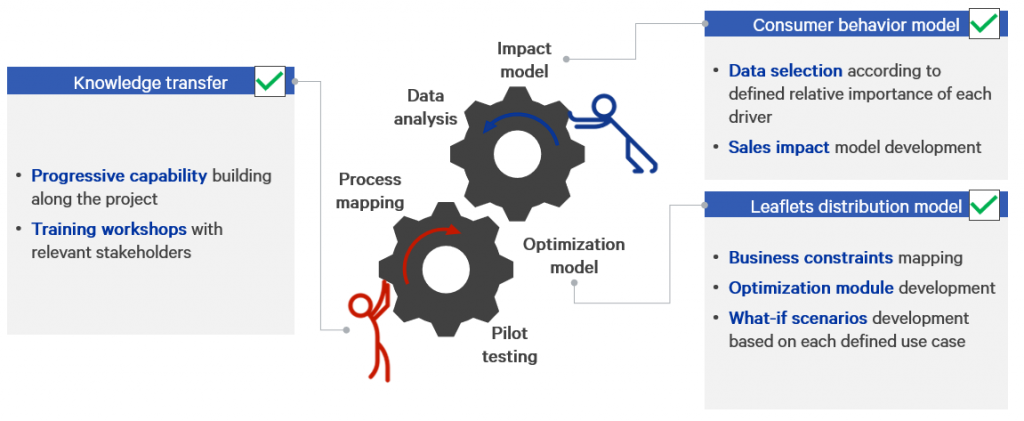In the era of digitalization, one might wonder if promotional activities based on printed leaflets possess the impact they had in the past or whether there are customers more prone to be responsive to this type of engagement.
Accordingly, our client, a retail company, was seeking help to redefine its promotional leaflet distribution strategy.
The main goals were to increase store traffic and conversion rates while maintaining the current budget spending which limits both the leaflet number and distribution zones.
The first step was to understand, at the customer level, which segments reacted best to the printed leaflet distribution through pilot testing. To assess the impact of the distribution strategy, a control group, who did not receive a leaflet was established in every distribution cycle.
Then, our predictive model benchmarks people with similar characteristics from the test and control groups to quantify which are the customers more sensitive this type of contact.
The impact estimations were incorporated in an optimization model to determine the ideal zones and leaflet number to be distributed.

By evolving decision-making from a purely empirical and static standpoint to a data-driven process, our client can quantify and understand the effects of targeted promotional activity on different receivers.
The project reaped benefits by maximizing positive customer engagement with the leaflet leading to increased sales and optimized advertisement costs, while minimizing unnecessary resource usage.
Keeping the same budget, we were able to obtain an additional return of 14 cents for each euro invested.
The implemented model was internalized at the client, enabling autonomy from the team and allowing the creation of long-term value.